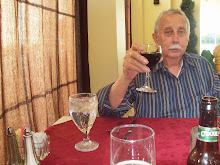One of the best science-fiction movies of all time was Stanley Kubrick's 2001, A Space Odyssey. Many people nowadays wonder what the big deal was with this movie. They have only seen it on the small screen. With digital special effects in more modern movies, the special effects seem ho-hum. In 1968, in a theatrical release, it was spectacular. I was one of the lucky ones who saw it in Cinerama in a wide-screen theater. It was nothing short of mind blowing.
The film deals with thematic elements of human evolution, technology, artificial intelligence, and extraterrestrial life, and is notable for its scientific realism, pioneering special effects, ambiguous imagery that is open-ended to a point approaching surrealism, sound in place of traditional narrative techniques, and minimal use of dialogue.
In my opinion such movies as Star Wars and Alien probably would not have been made were it not for the success of 2001. It was the first movie to show that a serious SF film with great special effects could draw a large audience. Perhaps one of the reasons for this was that the Apollo space program and other NASA space probes were gaining popularity. It was only a year later that Lance Armstrong and Buzz Aldrin stepped onto the surface of the moon. Four years later Pioneer 10 had reached the planet Jupiter.
For those of you who had never saw the movie, here is a synopsis (warning, it contains spoilers): The movie starts millions of years ago when a group of subhumans are competing with tapirs and other hominids for food. One morning a tall, thin, rectangular black monolith stands among the rocks. The ape men are excited but touch the object and calm down. By touching the monolith, they have learned to use bones as weapons and tools.
In the next scene the action moves to the near future where travel to the moon is an every day affair. A similar monolith is found on the moon and sends a signal towards Jupiter.
Eighteen months later a manned spacecraft is sent to Jupiter to investigate. Two of the team are awake to run the ship with the aid of an almost human AI called HAL. The other three are in hibernation. Hal announces that there is a problem with the AE-35 unit and it will fail with 100% certainty within 72 hours. The astronauts go EVA to replace the unit. The two astronauts scan the removed AE-35 unit but can't find any defects. Hal suggests putting it back in service to let it fail. Mission Control believes Hal has made an error because their HAL9000 unit, a twin to the one aboard Discovery, finds no flaw in the AE-35. Hal denies any chance of computer error. The astronauts go to a pod to have a private chat and decide to disable Hal's higher functions without disturbing the automatic ship control functions. Hal can see the men through the pod's window and reads their lips. When Poole goes out in the EVA pod, the pod murders him. When Dave uses a pod to recover Frank's body, a computer malfunction alert goes off and the life signs of the three hibernating astronauts flat line. Hal refuses to open the pod bay doors for Dave, explaining that he knows Dave is planning to disconnect him because he was able to read Frank and Dave's lips when they discussed it. He says the mission is too important to allow humans to jeopardize it. Dave releases Frank's body and maneuvers the pod to the emergency airlock hatch. He uses the pod's arms to open the door, holds his breath and jumps over to the ship. Dave goes to the computer room and shuts down HAL.
A much larger black monolith floats in Jupiter orbit,. Bowman leaves the Discovery in another EVA pod and enters a wormhole. The pod ends up somewhere in time and space in a bedroom with luminous white walls and floor and furniture in the style of Louis XVI. Dave ages swiftly until he is a dying old man. A monolith appears and transforms him into a star child.
If all of this sounds sort of mundane, it is because there is no way to describe the marvelous cinematography, special effects, music and emotional impact of the movie.
The idea for the movie was taken from an Arthur Clarke short story, The Sentinel. Clarke also wrote the script.
A sequel to the movie was released in 1984 called 2010: The Year We Made Contact starring Roy Schneider. The plot is based on Arthur Clarke's novel 2010: Odyssey Two.
It is a rather good movie itself, but nowhere as spectacular as 2001.














